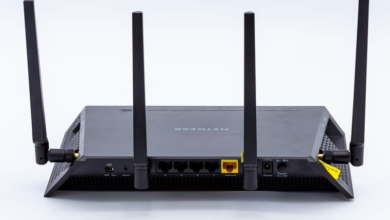Understanding Starlink Cost: A Comprehensive Guide to SpaceX’s Satellite Internet Service

Starlink Cost In recent years, SpaceX’s Starlink has emerged as a revolutionary solution to the global problem of internet connectivity. Leveraging a constellation of low Earth orbit (LEO) satellites, Starlink aims to provide high-speed internet access to even the most remote corners of the planet. While its promise of connectivity is captivating, one of the most common questions potential users ask is: What does Starlink cost, and is it worth it? In this article, we’ll dive deep into the various aspects of Starlink’s pricing, breaking it down into hardware, subscription plans, additional costs, and future pricing trends.
What Is Starlink?

Starlink is SpaceX’s ambitious project to deliver global high-speed internet through a Starlink Cost network of satellites. Unlike traditional internet providers that rely on ground-based infrastructure, Starlink’s approach uses thousands of satellites orbiting Earth at altitudes of around 550 kilometers. This low-latency setup significantly reduces lag, making it a viable option for activities like video conferencing and online gaming.
The Cost Breakdown
Starlink’s pricing model can be divided into the following Starlink Cost components:
Hardware Cost
To use Starlink, customers need the proprietary hardware kit, which Starlink Cost includes:
- A satellite dish (also called a “Dishy McFlatface”)
- A Wi-Fi router
- Necessary cables and a mounting tripod
The hardware kit currently costs $599 for residential customers. Starlink Cost This is a one-time purchase and is essential for accessing Starlink’s services. Business and high-demand users may require a more robust kit, which costs around $2,500 or more depending on the plan.
Monthly Subscription Fee
The standard monthly subscription fee for Starlink’s internet service is $120 Starlink Cost for residential use. For business or high-performance plans, the cost can range between $250 and $500 per month, depending on the specific requirements and location.
Additional Costs
- Shipping and Handling: A flat fee of around $50 for the hardware kit delivery.
- Installation Costs: While many users set up their kits independently, professional Starlink Cost installation services may cost $100 to $500 depending on complexity.
- Optional Accessories: Additional mounts, poles, or cable extenders can add anywhere from $30 to $200 to the total cost.
Comparing Starlink with Other Internet Options

While Starlink might seem expensive upfront, it’s important to consider its value in comparison to traditional internet services.
Urban vs. Rural Internet Costs
In urban areas, high-speed internet is relatively affordable, often ranging from $50 to $100 Starlink Cost per month. However, rural customers frequently pay more for slower, less reliable services like DSL or satellite internet (e.g., HughesNet or Viasat), which can cost $70 to $150 per month with data caps and lower speeds.
Starlink’s high-speed, low-latency service is particularly appealing for rural users, even if the Starlink Cost initial cost is higher. Moreover, unlike traditional satellite providers, Starlink does not impose data caps.
Global Reach
Starlink’s pricing is relatively consistent worldwide, though variations exist due to regional taxes and fees. In some remote regions, where alternatives like fiber or cellular-based internet are unavailable, Starlink is often the most viable option despite its premium pricing.
Special Plans and Discounts
Starlink offers several options tailored to different types of users:
Starlink RV (Now Known as Starlink Roam)
Designed for users on the move, Starlink Roam allows internet access in various locations, such as while traveling in an RV. The hardware costs $599, while the monthly subscription starts at $150 for regional access or $200 for global access.
Starlink Business
For enterprise clients, Starlink Business offers enhanced speeds (up to 350 Mbps) and prioritized network traffic. However, this comes at a premium, with hardware costing $2,500 and monthly fees starting at $500.
Starlink for Maritime and Aviation
Tailored for vessels and aircraft, Starlink’s maritime and aviation plans are significantly more expensive, with monthly costs exceeding $1,000 and specialized hardware priced upwards of $10,000.
Long-Term Cost Considerations
Ongoing Development and Price Adjustments
As Starlink continues to scale its operations, costs are expected to decrease. SpaceX has already reduced hardware prices from their initial $3,000 to the current $599. Further advancements in satellite technology and manufacturing efficiencies could lead to more accessible pricing.
Durability and Lifespan
Starlink’s hardware is built to withstand various weather conditions, but long-term maintenance costs are still unclear. Replacement costs for damaged equipment should be factored into the overall investment.
Is Starlink Worth It?
The answer depends on your specific needs and location.
Who Benefits Most from Starlink?
- Rural and Remote Users: Starlink is a game-changer for those with limited or no access to high-speed internet.
- Travelers: The portability of the Starlink Roam plan makes it ideal for adventurers.
- Businesses in Underserved Areas: High-speed connectivity can drive growth in remote regions.
Who Might Find Starlink Less Appealing?
- Urban Dwellers: Fiber-optic or 5G networks often offer better speeds at lower costs.
- Casual Internet Users: For those who don’t require high-speed internet, traditional satellite providers might suffice.
Future Pricing Trends and Competitors
SpaceX is not the only company aiming to provide satellite-based internet. Competitors like Amazon’s Project Kuiper and OneWeb are entering the market, potentially leading to more competitive pricing in the coming years. Additionally, as Starlink achieves economies of scale, the cost of both hardware and subscriptions could decline.
Final Thoughts
Starlink’s costs, while steep at first glance, represent an investment in cutting-edge technology that brings reliable internet to underserved areas. For those in rural or remote regions, the service can be life-changing, enabling access to education, healthcare, and economic opportunities previously out of reach.
As SpaceX continues to innovate, the future of global connectivity looks brighter, and Starlink could well become an essential tool in bridging the digital divide. If you’re considering Starlink, evaluate your current internet needs and weigh the costs against the benefits—it might just be the upgrade you’ve been waiting for.
Starlink Cost




